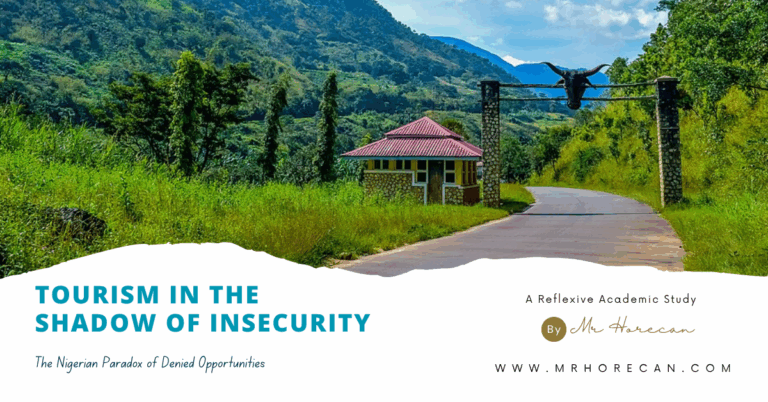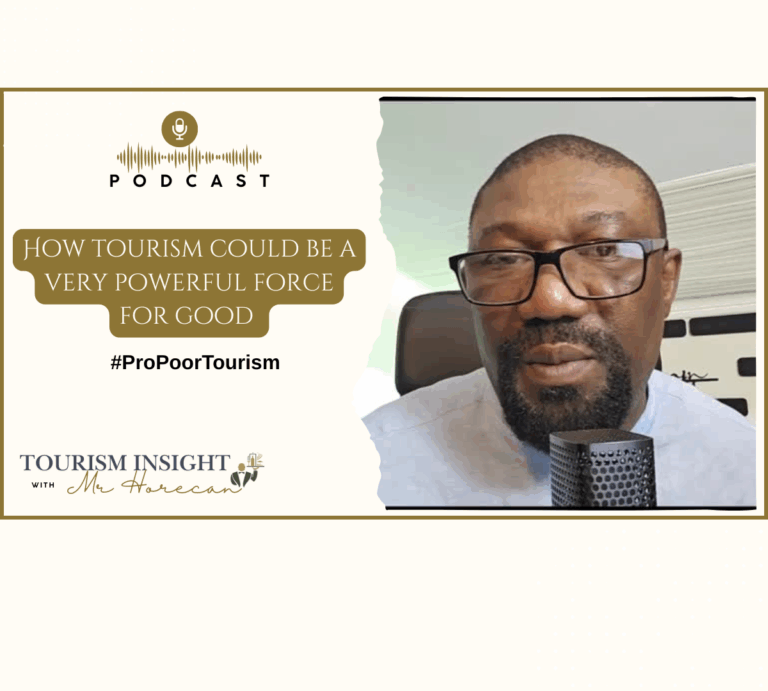
Introduction: A Personal Reflection from a Developing Country Perspective
Growing up in a developing country, I have seen how tourism can transform communities. From the vibrant craft markets of Ghana to the eco-tourism lodges of Kenya, tourism has been a lifeline, offering jobs, income, and opportunities to marginalized groups. It has been particularly empowering for women and youth, creating pathways to economic independence and social inclusion.
However, my experience as a pro-poor tourism advocate has also exposed me to the harsh realities of the tourism sector. Many workers, whether in hotels, restaurants, or transport services, face low wages, long hours, and insecure contracts. Tour guides, in particular, often work without formal agreements or social protections. While tourism generates significant revenue, local communities frequently receive only a small share of the economic benefits, despite being central to the industry’s success.
This is why the United Nations’ adoption of a new tourism employment indicator within the Sustainable Development Goals (SDGs) Indicator Framework is a pivotal development. This indicator acknowledges tourism’s role beyond mere economic metrics, incorporating a more inclusive and socially aware approach to measuring tourism’s contribution to development. By systematically tracking tourism employment, it moves beyond GDP to reflect the human aspect of the industry, emphasizing employment quality and the social impact of tourism jobs.
"This indicator acknowledges tourism’s role beyond mere economic metrics by incorporating a more inclusive and socially aware approach to development—but the real challenge is not just to count tourism jobs, it’s to make them count for the people who rely on them."
The Global Milestone and Its Message
The new indicator was formally adopted at the 56th session of the UN Statistical Commission, marking the first time that global data on tourism employment will be systematically monitored within the SDG monitoring process. This decision, which increased the number of official tourism SDG indicators from two to three, is seen as a major step forward in recognizing tourism’s role in economic and social progress (UNWTO, 2025).
UN Tourism Secretary-General Zurab Pololikashvili emphasized the importance of this new approach, stating:
“What gets measured, gets done. As part of Goal 8, we strive for sustainable tourism that creates jobs. The new tourism employment indicator goes beyond GDP to enhance our understanding of tourism’s potential for social progress. Policymakers will be better equipped to identify gaps, address inequalities, and maximize tourism’s social and economic benefits—ensuring no one is left behind.” (UNWTO, 2025)
More on the official announcement is available at UNWTO News.
Recognizing Past Achievements in Measuring Tourism’s Impact
The UN has historically emphasized tourism’s economic value through two indicators:
Tourism’s Contribution to GDP (SDG 8.9.1) – Showcasing tourism’s power as an economic engine.
Sustainable Tourism Policies (SDG 12.b.1) – Encouraging environmentally and socially responsible strategies.
Yet, these indicators alone have not captured the realities on the ground. GDP increases do not guarantee improved livelihoods. A booming hotel chain may still underpay its cleaners and exclude local suppliers. That’s why this new employment-focused indicator is both timely and necessary—it moves the spotlight from profits and sustainability alone to the people who sustain the industry.
Why the New Tourism Employment Indicator Represents Progress
The newly adopted indicator ensures systematic tracking of employment in the tourism sector through the SDG framework. This is vital for regions like Africa, where informal employment in tourism is widespread. For example, tourism accounts for 26.3% of total employment in Fiji and 36% in Vanuatu (Gounder, 2020). Accurate data can inform better labor policies and reveal previously invisible workforce contributions.
A major innovation of the indicator is its disaggregated data model—it allows employment trends to be analyzed across gender, contract type, and tourism industry segments. This enables national policymakers to identify inequalities and respond with targeted interventions.
The shift from GDP to people-centered indicators aligns with the broader SDG vision of inclusivity, equity, and empowerment.
Persistent Questions and Gaps
While the indicator is promising, it leaves several important questions unanswered:
Will it capture the real income disparity between expatriates and locals?
Will it reveal employment without contracts, delayed wages, and exploitative dismissals?
Will it account for poverty levels and poor living conditions among tourism workers?
Will it include non-financial indicators to reflect worker well-being?
Will it assess informal employment, especially in Africa, where it dominates the tourism sector?
Unless these aspects are addressed, the indicator risks painting an incomplete picture of tourism employment realities.
Future Indicators That Could Strengthen Tourism Employment Measurement
To close the data gaps, I propose the following future indicators:
Tourism Wage Parity Index – Tracks income gaps by gender, nationality, and sector.
Social Security Coverage in Tourism – Measures access to healthcare, pensions, and contracts.
Tourism and Poverty Reduction Index – Quantifies local economic reinvestment from tourism.
Tourism Career Mobility Index – Evaluates training access and advancement opportunities.
Informal Employment Impact Index – Assesses economic stability of informal tourism jobs.
Implementation and Communication in Developing Regions
For this indicator to have real impact, especially in Africa, implementation must go beyond global declarations. Several steps are essential:
Infrastructure and Institutional Capacity
National statistical offices must be equipped with the tools and training to gather, verify, and process tourism employment data.
Governments must invest in ICT infrastructure and standardize reporting across ministries and regions.
Community Awareness and Stakeholder Engagement
Workers and small business owners in the informal tourism economy must be made aware of the indicator and its purpose.
Local NGOs and tourism boards should be empowered to collect data, ensure ethical practices, and hold institutions accountable.
Data Collection and Presentation
Surveys must include informal sector data, job quality metrics, and gender-specific indicators.
National dashboards and visual tools should be created to share findings transparently with citizens and policymakers.
Adherence and Compliance Mechanisms
Governments must enforce standards that link employment data to policy decisions, such as minimum wage compliance or social protection expansion.
UNWTO and ILO must monitor progress and provide incentives for data accuracy and transparency.
Conclusion: A Major Win, but the Journey Continues
The adoption of the UN’s tourism employment indicator is a turning point. It affirms that tourism is about people—not just profits—and aligns global tourism metrics with the lived realities of workers in developing countries.
But counting jobs is only the beginning. We must work toward transforming them—ensuring they are dignified, secure, and economically empowering. That means incorporating fairness, transparency, and equity into tourism systems.
As a pro-poor tourism advocate, I believe this new indicator offers the right momentum—but it is up to us, especially in the Global South, to turn it into transformative change.
Let this not be the end, but the foundation for a future where every tourism job is a step out of poverty—not a trap within it.



